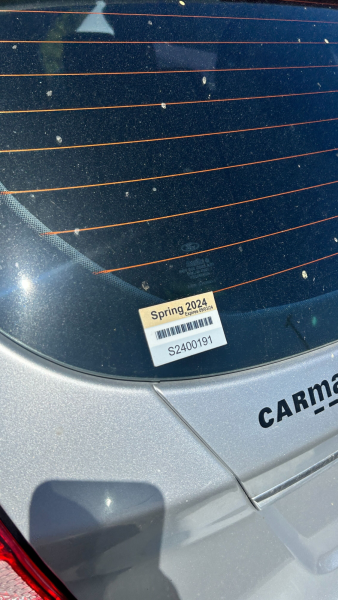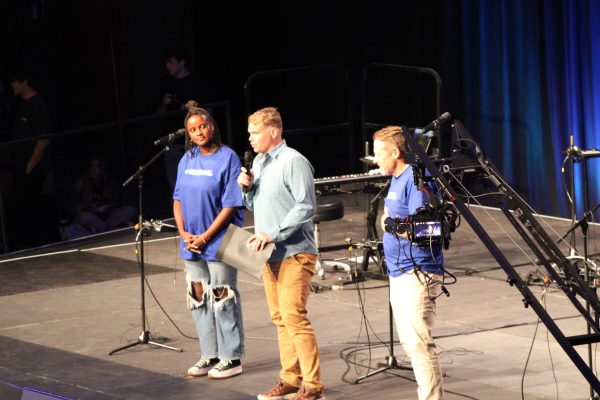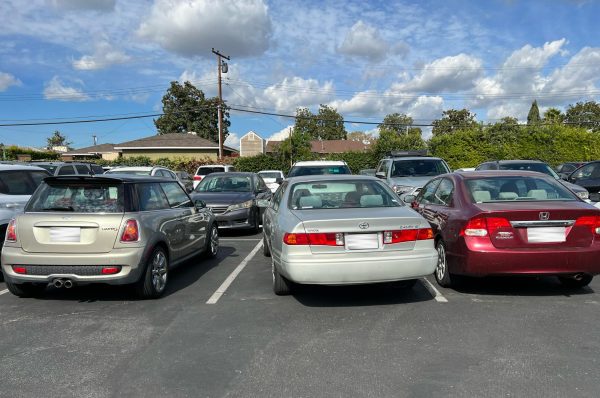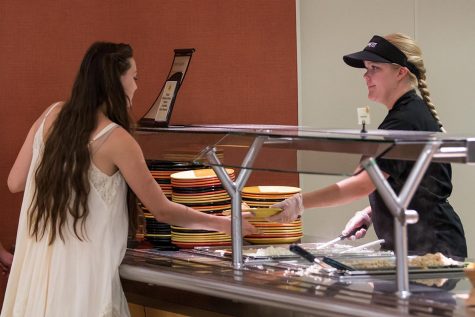TOMS shoes wear out your wallet
Buying a pair of TOMS shoes supports a good cause but also a growing trend. Opinions writer Ethan Froelich discusses whether or not the low quality of TOMS shoes is worth the price.
April 12, 2011
On April 5, Biola students were eager to do something unusual: going a day without shoes. Coming first to Biola University, TOMS shoes put out the challenge to college campuses around the country to go a day without wearing shoes in order to raise awareness for children without shoes.
As of April 2010, TOMS shoes had given away one million pairs of shoes to children in need, according to the TOMS official website. By default then, they have also sold one million pairs of shoes. The shoes have gained momentum and are bestsellers in Nordstrom stores across the country, and have been featured in magazines such as Vogue, Harper’s Bazaar, People and Marie Claire.
Reasons for purchasing TOMS shoes
Melissa Mendez, a former student at Cal State Fullerton, owns seven pairs of TOMS shoes. She said she heard of the One for One campaign, but what made her buy multiple pairs was TOMS’ distinct style. She loves the Cordones style of TOMS, which are some of the most comfortable shoes she owns. While Mendez recognizes that the corporation benefits the needy, she also recognizes how stylish they are becoming. Just as people are purchasing TOMS due to their humanitarian efforts, many more are purchasing them because they are fashionable.
Good cause, low-quality product
Yet, the high prices and seemingly-low quality of the shoes has a few Biola students questioning TOMS’ overall effectiveness.
Shelby McCoy, a junior, doesn’t own a pair of TOMS. When asked about the movement and the impact she thought the shoes had on the needy, she responded that the shoes seem to bring up a crisis of intent among people. She said, “If your purpose for buying the shoes is to help kids in impoverished countries, you should find a more effective way to help … but if you are looking just to buy a trendy pair of shoes and the One for One movement is a bonus, then that is more understandable.”
Her main problem with the shoes is their price. A single pair of shoes can run anywhere from $48 for the most basic shoe, to $79 for the high-top Botas. This seems like far too much money for a pair of thin, rubber soled shoes with canvas slapped on it.
Americans are not known as a walking culture. We walk outside, get in our cars and drive to wherever we want to go. People in impoverished countries don’t have this convenience, and some children have to walk miles to school, or even to get water. When you add it up, the kids who receive these shoes are going to be doing a lot more walking than you and me.
When my pair of TOMS have holes in them after just six months of being worn sparingly in America, imagine their condition after days of hard wear in a foreign country. So, if you are going to buy TOMS so that children can walk to school, you have to ask yourself how many trips to school it will take before these children need new shoes.
TOMS’ effective business model
It is important to highlight what I am not saying. I am not saying TOMS shoes itself is failing, after all, TOMS never claimed to be a primarily humanitarian organization. They are a for-profit organization with a responsible, and highly profitable, business model.
What TOMS has done is take a simple shoe design called the “alpargata” from Argentina used by the “gauchos”, or cowboys, and made it simpler, less durable, with a TOMS logo on the back. This is genius. They are making money off an ancient shoe model that costs very little to make, and selling it for $45, while also having a marketing and advertising platform that gets people to buy the shoe because it’s trendy and supports a humanitarian cause.
Knock-offs support same cause
Now for what I am saying. These are simply terrible shoes for walking in everyday, let’s just be honest. My feet hurt when I walk in them for more than an hour, they are flimsy and have no arch support, and the only way they will last is if you keep them in a vault, not to mention they cost too much. While the original shoes from Argentina are made with tough, durable, inch-thick rope on the bottoms; TOMS are made with a thin, half-inch piece of rubber that wears when you even think of walking on asphalt.
To prove that they cost too much, take a look at Sketchers new shoe –– BOBS. It has a nice ring to it, though it sounds familiar. Oh yeah: TOMS. Take a look at the picture for the shoe and the price. Look familiar? They are exactly the same, including the same TOMS “one-for-one” model of donating to those in need. While BOBS is just a shameless act of corporate plagiarism, this alerts the public to an important issue with TOMS: they are not a hard act to follow.
The original Argentinean shoe is bought because they are cheap and durable; come to the U.S. and the knock-off of this Argentinean cowboy shoe costs $45 dollars. In essence, they are a worse shoe, and cost more than their Argentinean cousin.
Basically, people are buying these shoes because they are trendy and fashionable and have placed price and durability on the back burner of their decision making. TOMS deserves a hand, as they have successfully received the support of young, college-aged people who want to “make a difference” and also have received the support of high profile actresses like Charlize Theron.
It’s clear that TOMS has made a commitment to helping communities and impoverished people around the world. Yet, while TOMS is making huge strides in the right direction, they have many more steps to take before they become a viable, long-term solution for people without shoes. So, the next time you think of buying TOMS, just remember they have a ways to go –– hopefully, they can become more than shoes that will only last till tomorrow, and instead, be the shoes of the future.






